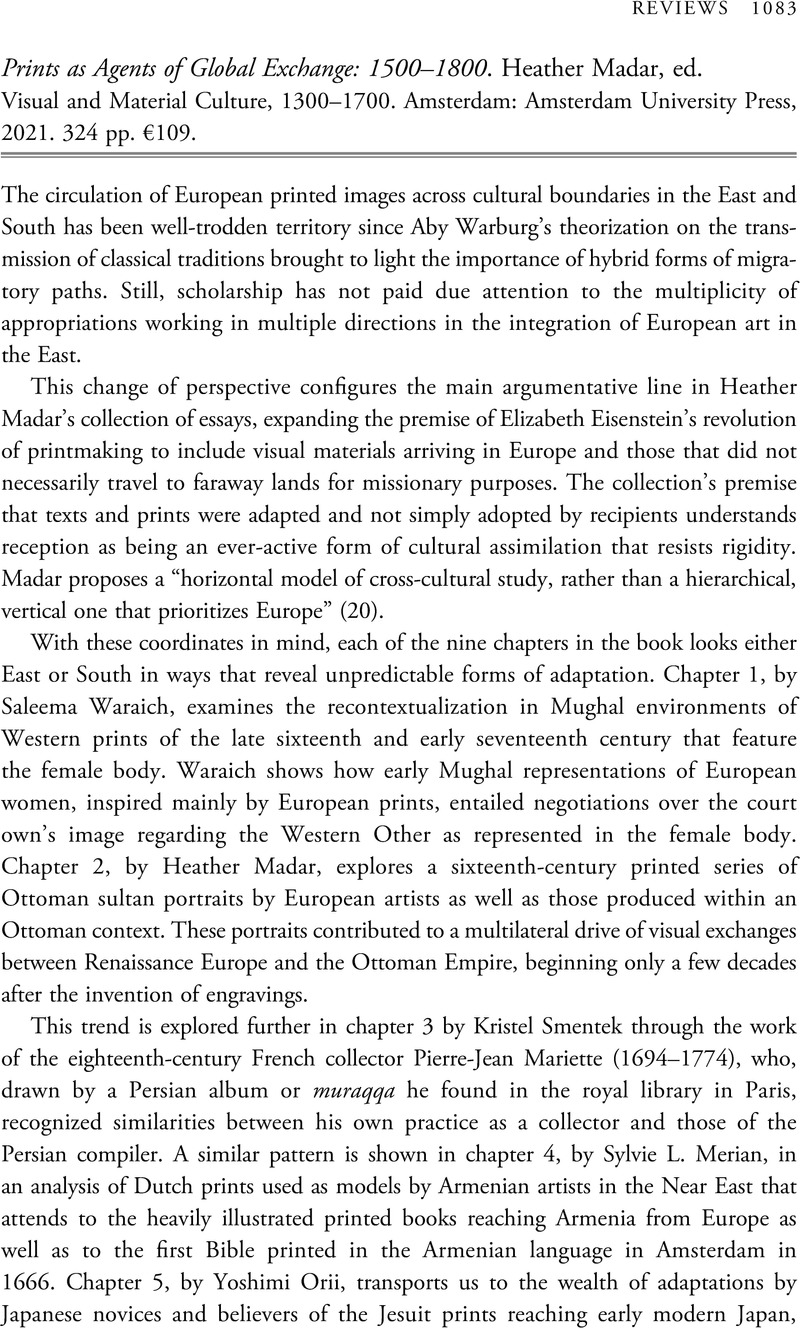No CrossRef data available.
Article contents
Prints as Agents of Global Exchange: 1500–1800. Heather Madar, ed. Visual and Material Culture, 1300–1700. Amsterdam: Amsterdam University Press, 2021. 324 pp. €109.
Review products
Prints as Agents of Global Exchange: 1500–1800. Heather Madar, ed. Visual and Material Culture, 1300–1700. Amsterdam: Amsterdam University Press, 2021. 324 pp. €109.
Published online by Cambridge University Press: 15 November 2023
Abstract
An abstract is not available for this content so a preview has been provided. Please use the Get access link above for information on how to access this content.

- Type
- Review
- Information
- Copyright
- Copyright © The Author(s), 2023. Published by the Renaissance Society of America



